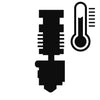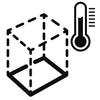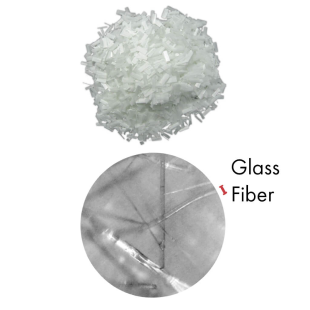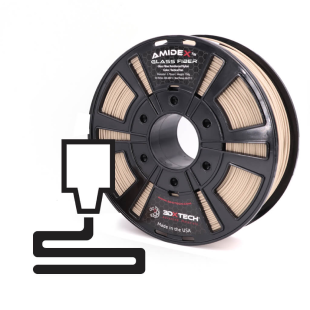Description
| 3DXSTAT ESD-Flex
TPU [90A] [thermoplastic polyurethane] elastomer is an engineering-grade
thermoplastic chosen for its balance of excellent flexibility, ease of
printing, chemical resistance, and toughness. 3DXSTAT ESD Flex elastomeric
filament has been formulated to offer ESD-Safe electrical conductivity with a
target surface resistance of 10^3 Ohm. |
Benefits of 3DXSTAT ESD-FLEX TPU
- High elongation, over 300%
- Shore 90A semi-flex hardness
- Ease of printing compared to similar flexible materials
- Excellent layer bonding
- Outstanding fatigue resistance
- Very low odor while printing
- Low moisture absorption
- Retains flexibility even at low temperatures
- Styrene and BPA free
Reviews
Print Recommendations

Extruder Temp
220-240°C

Bed Temp
40-60°C

Heated Chamber
Not required

Nozzle Specs
No special concerns

Layer Height
No special concerns

Drying Specs
65°C for 4 hours

Abrasive Material
This material is particularly abrasive among 3D printing filaments. Users may find standard brass nozzles are chewed through very quickly compared to standard wear and tear. When worn through, the nozzle diameter will widen inconsistently and the printer will experience extrusion issues.
Because of this, it's strongly recommended this material be printed through a hardened steel nozzle rather than a softer metal. Hardened steel nozzles can often be inexpensive and easily installed depending on your printer manufacturer's instructions.
Material DETAILS
Glass Fiber Reinforced Filament

What Is It?
DescriptionFibers made of glass reinforced into the polymer during manufacturing and aligned along the axis of filament.
This, along with their physical makeup, give this material enormous strength and mechanical properties.

What Does It Do?
Glass fiber reinforcement gives material a lot of desirable properties:
High strength
High stiffness
High chemical resistance
Low thermal expansion

How Does It Work?
Reinforcing plastic with glass fibers produces a 3D printing filament which exhibits the best properties of both fiberglass and the plastic of choice.

What Is It Good For?
Ideal for any applications which require strength and rigidity.
For these reasons, glass fiber reinforced filament is very popular in automotive, mechanical, civil engineering, and research industries.
RECOMMENDED
You May Also Like
Make confident choices and discover the best printing solutions.

